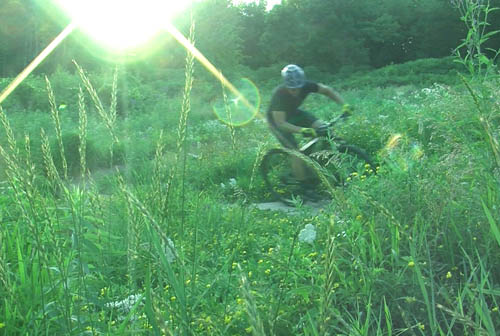On Feb. 11 the Metropolitan Council adopted the 2040 Regional Parks Policy Plan for the seven-county metro area. The plan reflects the Council’s vision for the region over the next 30 years, as described in Thrive MSP 2040. One key area of focus in the plan is equitable use of parks by all residents.
 “Thrive aspires to achieve regional outcomes that go hand-in-hand our objectives and strategies for the regional parks system,” said Council Chair Adam Duininck. “Council policies promote livability, stewardship, sustainability, prosperity, and equity. If we provide for and take care of the natural amenities in our regional parks, our regional parks will provide for and enhance our region.”
“Thrive aspires to achieve regional outcomes that go hand-in-hand our objectives and strategies for the regional parks system,” said Council Chair Adam Duininck. “Council policies promote livability, stewardship, sustainability, prosperity, and equity. If we provide for and take care of the natural amenities in our regional parks, our regional parks will provide for and enhance our region.”
Specifically, Thrive directs the Council to collaborate with the Metropolitan Parks and Open Space Commission, regional park agencies, and state partners to:
-
Expand the Regional Parks System to conserve, maintain, and connect natural resources identified as being of high quality or having regional importance, as identified in the 2040 Regional Parks Policy Plan.
-
Provide a comprehensive regional park and trail system that preserves high-quality natural resources, increases climate resiliency, fosters healthy outcomes, connects communities, and enhances quality of life in the region.
-
Promote expanded multimodal access to regional parks, regional trails, and the transit network, where appropriate.
-
Strengthen equitable usage of regional parks and trails by all our region’s residents, such as across age, race, ethnicity, income, national origin, and ability.
Equitable use of parks is new goal
 The Council recognizes that the regional parks and trails have positive impacts on property values, community vitality, and public health, as well as preserving significant natural resources. Making sure parks are attractive to everyone is a key Council goal.
The Council recognizes that the regional parks and trails have positive impacts on property values, community vitality, and public health, as well as preserving significant natural resources. Making sure parks are attractive to everyone is a key Council goal.
The Council has committed to several strategies to enhance equitable use outlined in the 2040 Regional Parks Policy Plan. The strategies include:
-
Build awareness of and visits to the Regional Parks System among current non-park users through a Council-funded regional parks ambassador program.
-
Require a certain percentage of each park agency’s share of their Parks and Trails Legacy Fund appropriations be used to “connect people to the outdoors,” including programming, events, staff, and training, among others.
-
Reflect emerging recreational patterns of use to allow and encourage facilities such as large open ball fields in the Regional Parks System.
-
Work with the park agencies to develop a Regional Parks System Equity Toolkit—a short series of open-ended questions to identify how a project will advance equitable use.
Visitor numbers grow along with parks and trails
Over the years, the numbers of park visits has grown and so has the system itself. In 2004, there were 35 regional parks, 11 park reserves, 22 regional trails, 5 special recreation features, and 30.3 million visits. By 2014, the system had expanded to 41 regional parks, 12 park reserves, 40 regional trails, 8 special recreation features, and 47.3 million visits (in 2013). By comparison, the Mall of America generates about 40 million visitors a year.
Since the creation of the Regional Parks System in 1974, the Council has invested more than $821 million in State funds and Council bonds to help park agencies buy land, develop parks and trails, and support the system. These funds have been administered by the Council through various grant programs such as the regional parks capital improvement program, acquisition opportunity fund, and Parks and Trails Legacy Fund.
Carrying on the parks legacy
The Twin Cities metro area has benefitted from visionaries like Horace Cleveland, Eloise Butler, Theodore Wirth, and others who, starting in the late 1800s, left a park and open space legacy for future generations to enjoy. The vast network of regional parks and trails truly enhances the quality of life here. The Council’s plan builds on that legacy.
State law directs the Council to take the leading role in providing for a Regional Parks System that will complement the recreational open space opportunities afforded by federal, state, and local units of government. State law gives the Council the authority to determine which parks and trails in the seven-county area are included in the Regional Parks System.
Once a park or trail becomes a part of the system, the Council supports it with planning, funding, information, marketing, and advocacy. The Council works in partnership with 10 park agencies, among them cities, counties, and special park districts, that own and operate regional parks and trails.
More information
2040 Regional Parks Policy Plan